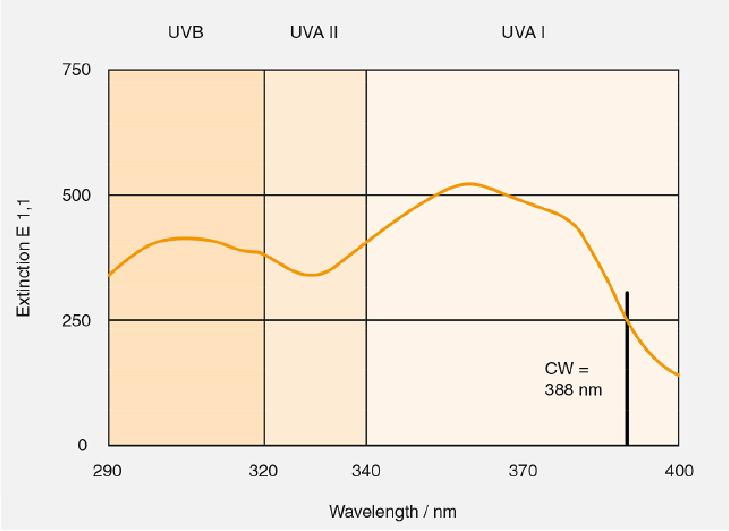Abstract:
Back ground: Ultraviolet (UV) radiation is part of the electromagnetic (light) spectrum that reaches the earth from the sun․ It has wavelengths shorter than visible light, making it invisible to the naked eye․ Ultraviolet A (UVA) is the longer wave UV ray that causes lasting skin damage, skin aging, and can cause skin cancer․ Ultraviolet B (UVB) is the shorter wave UV ray that causes sunburns, skin damage, and can cause skin cancer․
Result: Sunscreens are products combining several ingredients that help prevent the sun’s ultraviolet (UV) radiation from reaching the skin․ Two types of ultraviolet radiation, UVA and UVB, damage the skin and increase your risk of skin cancer․ Sunscreens vary in their ability to protect against UVA and UVB․
Conclusion: Sunscreen can help to prevent skin cancer by protecting from the sun’s harmful ultraviolet rays․ The American Academy of Dermatology recommends everyone use sunscreen that offers the following: Broadspectrum protection (protects against UVA and UVB rays) Sun Protection Factor (SPF) 30 or higher․
Introduction:
The generic name of the active ingredient is Bisoctrizole (USAN)․ Chemical name is known as 2, 2′-methanediylbis [6-(2H-benzotriazol-2-yl)-4-(2, 4, 4-trimethylpentan-2-yl) phenol] CAS No: 103597-45-1․
The official International Nomenclature Cosmetic Ingredient (INCI) name for Sunbest-M is Methylene bisbenzotriazolyl tetramethylbutylphenol
The brand name for the product is Sunbest-M produced by Vinner Labs Pvt Ltd․
Bisoctrizole is a broad-spectrum ultraviolet radiation absorber, absorbing UVB as well as UVA rays․ It also reflects and scatters UV․
Bisoctrizole is a hybrid UV absorber, the only organic UV filter produced in micro fine organic particles (< 200 nm)
Bisoctrizole shows very little photo degradation and has a stabilizing effect on other UV absorbers,
UV spectrum of Bisoctrizole:

Safety studies:
Bisoctrizole exhibits low toxicity by dermal and oral routes of exposure․ Bisoctrizole caused minimal irritation when applied to rabbit eyes and skin․ Bisoctrizole did not cause sensitization, photoirritation, or photosensitization when applied to the skin of guinea pigs or humans․ Bisoctrizole was not genotoxic in several different assays with and without UV activation․ In an in vitro assay, Bisoctrizole exhibited low penetration (0․14%) across human skin with 20% considered to be absorbed into the skin layers․ In a go-day subchronic oral gavage study in the rat, the NoObservable-Effect-Level (NOEL) are 1,000 mg/kg/day, which was the highest dose tested․ In a developmental toxicity study, the maternal and fetal NOELs were 1,000 mg/kg, which were the highest doses tested․
Combinations with other sunscreen actives
Bisoctrizole belongs to a new class of UV filters that acts both as a micropigment and organic UV absorber and is a highly efficient sunscreen due to its triple action: UV absorption by a photostable organic molecule, light scattering and light reflection by its micro fine structure․
Regulatory Status:
| Country | Approval Status |
|---|---|
| Europe | |
| European Union | Included in Part I of Annex VII of the European Cosmetic Directive 76/768/EEC․ |
| Switzerland | Included in Appendix 2 of Regulation on Cosmetic Products (Verordnunq & iiber kosmetische Mittel – VKos)․ |
| Africa | |
| South Africa | Included in South Africa’s Foodstuff, Cosmetics and Disinfectants Act․ |
| Asia | |
| China | Included in Hygienic Standard for Cosmetics |
| Hong-Kong | Sunscreen products are free to be placed on the market as long as no therapeutic claims are made and safe use is warranted․ No registration of raw material or end product required․ |
| India | Included in IS 4707 Standards |
| Japan | Included in positive list under Japanese pharmaceutical affairs law |
| Malaysia | No special registration requirements for active ingredients․ Customer formulations need to be registered with the drug control authority |
| Singapore | Sunscreen products are free to be placed on the market as long as no therapeutic claims are made․ No registration of rw material or end product required |
| Thailand | No special registration requirements for active ingredients․ Customer formulations need to be registered with the ministry of public health․ |
| Taiwan | Approved by department of health․ |
| Australia | Approved by Therapeutic Goods Agency (TGA) for use in dermal sunscreen products․ |
| South and Central America | |
| Argentina, Bolivia, Brazil, Paraguay, Uruguay | Included in Lista Positiva de Filtros Ultravioletas do Mercusol (Positive List of UV Filters, Mercosur) |
Conclusion:
Bisoctrizole is an inherently photostable broadspectrum filter absorbing both UVA and UVB rays, Bisoctrizole is an efficient SPF booster and has a stabilizing effect on other UV filters․ Bisoctrizole, beyond its own efficiency, is also an enhancer for the properties of other filters and is thus used in combination with numerous other UV filters․
References:
Pharmacopoeial Forum, Volume No: 32(2)
Next generation UVfiltersfor sun protection
Department of health and human services
Time and Extent Application for Bisoctrizole – UV filter
Facts about sunscreens – American academy of dermatology
Disclaimer:
The information provided in this sheet is gathered from reliable and well published sources to the best of our knowledge, information, and belief on the date of its collation, release and is not to be considered a warranty or quality specification. Information is supplied upon the presumption that the receivers will make their own determination as to its suitability for their purposes prior to use. In no event will Vinner Labs, or its group companies or any company bearing Vinner logo, be responsible for damage of any nature what so ever resulting from use of or upon reliance of the information.
